India, being a land of diverse cultures and rich history, has numerous magnificent Architectural marvels. Ranging from ancient temples to grand palaces, these architectural wonders showcase the country’s Artistic and Engineering prowess. The Indian architectures will never fail to give a historic feel for visitors.
India is well known for its stunning architecture that reflects the country’s rich cultural and historical heritage. In this article we will explore the best Indian architectures that make the world stunning.
Here is the list of Best Indian Architectures:
India is renowned for its diverse and culturally rich Architectural heritage, which encompasses a wide range of styles and influences. From ancient Rock-cut caves to majestic temples and palaces, moreover, the country boasts a plethora of architectural wonders that showcase its rich history, art, and culture.
This curated list features some of India’s most Awe-inspiring and iconic structures, each with its own unique tale and significance.
- Jantar Mantar
- Amber Fort
- Ajanta and Ellora caves
- Fatehpur Sikri
- Khajuraho Temples
- Sanchi Stupa
- Humanyun’s Tomb
- Hawa Mahal
- Rani ka Vav
- Hampi
- Chola Temples
Jantar Mantar: The Astronomical Marvel among the Best Indian Architecture.
Jantar Mantar, an impressive Astronomical observatory located in Jaipur, Rajasthan. It was constructed by Maharaja Jai Singh II in the 18th century. It boasts a collection of 19 sophisticated instruments that can precisely predict Celestial events, showcasing the technological advancements of that era. The architecture of Jantar Mantar is a fusion of Indian and Islamic styles, highlighting the cultural diversity of India.
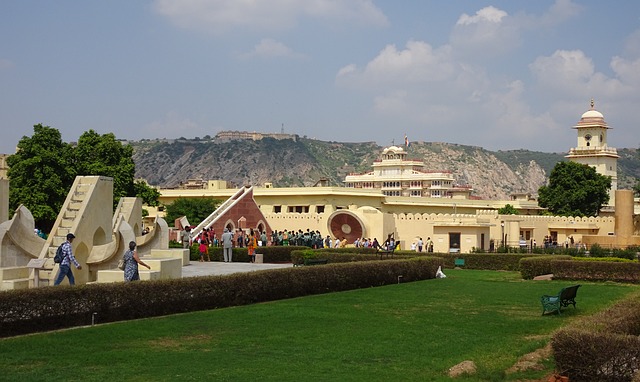
Additionally, Jantar Mantar’s instruments are not only precise but also massive in size. The Samrat Yantra, for instance, stands at 27 meters tall, while the Jai Prakash Yantra consists of two Hemispherical structures, each with a diameter of 6 meters. These structures were carefully constructed using local materials such as marble and stone, showcasing the Ingenuity of ancient Indian Architects and engineers.
Furthermore, Jantar Mantar’s design and instruments are a testament to Maharaja Jai Singh II’s passion for Astronomy and his desire to create a space where scholars could study the cosmos. His legacy continues to inspire generations of scientists and Astronomers, making Jantar Mantar not just a tourist attraction but also an important part of India’s scientific history.
Moreover, the observatory has been recognized as a UNESCO World Heritage Site, emphasizing its cultural and historical importance.
Amber Fort: A Majestic Fortress of Best Indian Architectures
The Amber Fort in Jaipur, Rajasthan, is an exceptional example of Rajput and Mughal architecture, blending both Hindu and Islamic styles. However, what makes this fort stand out is its elaborate and intricate design, showcasing the Artistic and Engineering brilliance of its time. The fort was build in the 16th century using red Sandstone and marble, which further enhances its Grandeur.
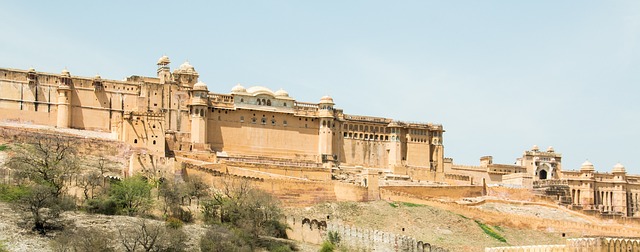
The fort is spread over four levels and features stunning palace interiors adorned with intricate carvings, frescoes, and mirror work. Above all, the Architectural Splendor of the fort lies in its Courtyards, each with a unique design and purpose. The Sheesh Mahal, also known as the Mirror Palace, is particularly remarkable, as it features thousands of tiny mirrors that reflect light beautifully.
Furthermore, the fort boasts several gardens and a stunning view of the Maota Lake. In other words, the fort was not just build for military purposes but also served as a Luxurious residence for the ruling family. Today, it stands as a testament to the rich history and cultural heritage of Rajasthan. Therefore, it has become a popular tourist destination and is considered one of the most significant Architectural marvels in India.
Timeless Rock-Cut Masterpieces: Ajanta and Ellora Caves – Best Indian Architectures
The Ajanta and Ellora caves in Maharashtra are a testament to India’s rich cultural and religious heritage. The Rock-cut architecture of these ancient caves features a unique blend of Buddhist, Jain, and Hindu styles, showcasing the Country’s diversity.
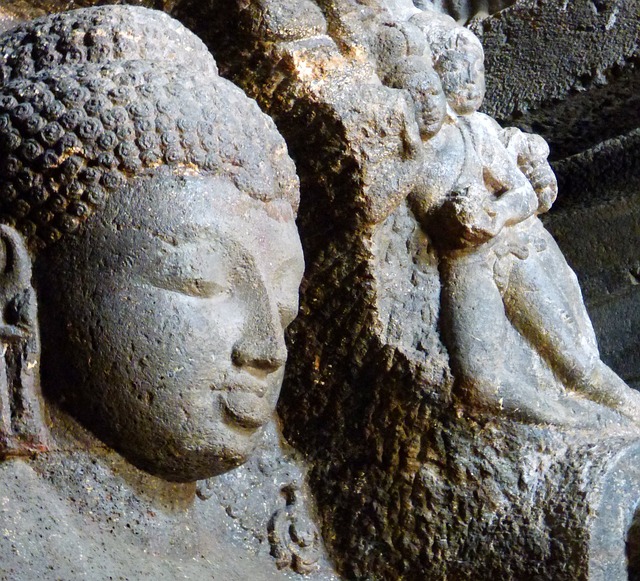
The caves are famous for their intricate carvings and paintings on the walls and ceilings, which have remarkably preserved over the centuries, making them a must-visit destination for history and architecture Enthusiasts.
The Ajanta caves are famous for their beautiful murals depicting scenes from the life of Buddha. In contrast, the Ellora caves showcase a fusion of Architectural styles from the Gupta and Chalukya periods. The caves are a testament to the skill and creativity of ancient Indian Artisans and continue to awe visitors with their beauty and Grandeur.
Discovering the Beauty of Fatehpur Sikri’s Red Sandstone Buildings
The ancient Fortified city of Fatehpur Sikri, built by Emperor Akbar in the 16th century in the Agra district of Uttar Pradesh, showcases a beautiful blend of Mughal, Persian, and Hindu styles in its architecture. Most of the buildings in the city are constructed from red Sandstone, featuring intricate carvings and white marble details.

Notable structures in Fatehpur Sikri include the Buland Darwaza, Diwan-i-Khas, Panch Mahal, and Jama Masjid. Despite being abandoned due to water scarcity shortly after its completion, the city’s Architectural legacy has been well-preserved and continues to attract tourists from all over the world. Furthermore, it was Designated as a UNESCO World Heritage Site in 1986.
“Khajuraho Temples: A Magnificent Display of Intricate Carvings and Iconic Indian Architectures”
The Khajuraho group of temples is a complex of Hindu and Jain temples in the Chhatarpur district of Madhya Pradesh, India. Built during the Chandela dynasty between the 9th and 11th centuries, the temples are well known for their intricate and erotic Sculptures.
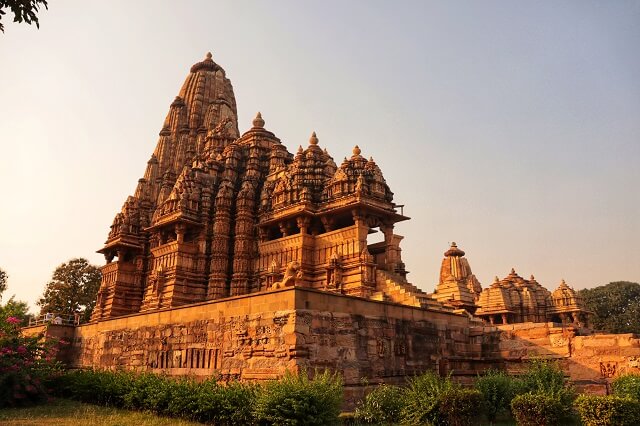
The Khajuraho temples are renowned for their impressive architecture that combines Nagara, Dravidian, and Indo-Aryan styles. Adorned with intricate carvings of deities, animals, and humans, the Sandstone structures are a sight to behold. Moreover, the temples have been recognized as a UNESCO World Heritage Site. Additionally, the temples provide insight into the rich history and culture of India.
The Sculptures depict various scenes from Hindu Mythology and everyday life. The temples are considered a UNESCO World Heritage Site and are a popular tourist Destination in India.
“Sanchi Stupa: The Magnificent Buddhist Architecture of India”
Proofread version: The Sanchi Stupa is an ancient Buddhist Monument located in Madhya Pradesh, India. It was build during the Mauryan period in the 3rd century BCE and later enlarged during the Shunga and Satavahana periods. The stupa is made of solid bricks and covered with white plaster. Additionally, it has four Gateways adorned with intricate carvings depicting the life of Buddha and his teachings. Above all, the central dome of the stupa, also known as the “Anda”, represents the cosmic axis and contains relics of Buddha.
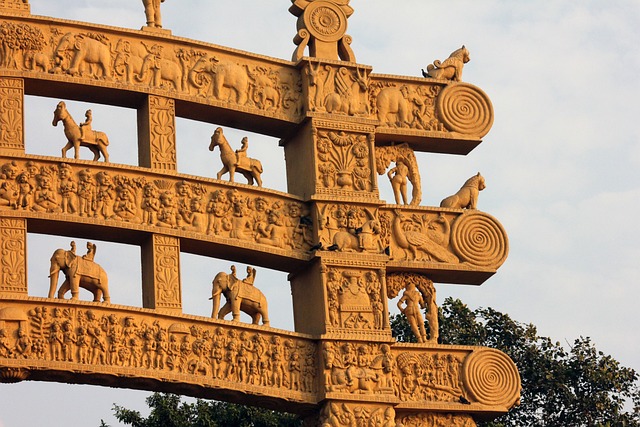
The stupa is made of solid bricks and covered with white plaster. Additionally, it has four Gateways adorned with intricate carvings depicting the life of Buddha and his teachings. Above all, the central dome of the stupa, also known as the “Anda”, represents the cosmic axis and contains relics of Buddha.
The Stupa is a fine example of early Buddhist architecture and is now a UNESCO World Heritage Site.
Exquisite Example of Mughal Architecture: Humayun’s Tomb in India
Humayun’s Tomb, located in Delhi, India, is a stunning piece of Mughal architecture. Commissioned in the 16th century by Emperor Humayun’s widow, Empress Bega Begum. Moreover, the architecture is an unique blend of Persian and Indian Architectural styles.
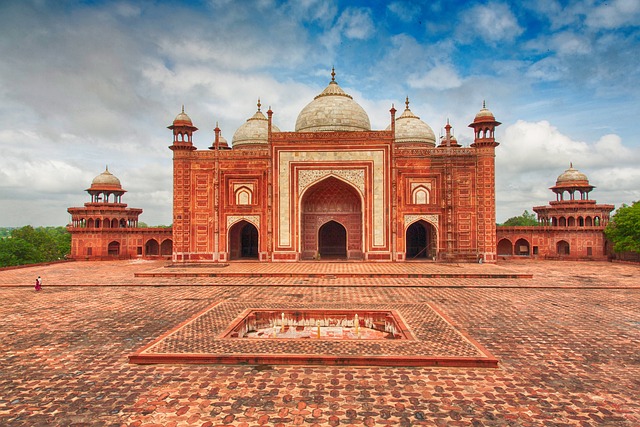
The structure is a combination of Persian and Indian Architectural styles, characterized by a high central dome, red Sandstone walls, and intricate details such as Intricate Carvings, Calligraphy, and Geometric patterns.
The Tomb also features landscaped gardens, water channels, and Fountains, reflecting the Mughal love for nature and Symmetry. The Humayun’s Tomb is recognized as a UNESCO World Heritage Site, and its design served as a model for constructing the famous Taj Mahal.
Marvel at the Unique Honeycomb Architecture of Hawa Mahal in India
Hawa Mahal, located in Jaipur, Rajasthan, India, is a remarkable palace build in 1799. The palace’s distinguishing feature is its Honeycomb-like exterior, with 953 small windows called Jharokhas, allowing cool air to flow through the palace. The palace is a fine example of Rajput architecture and has been a popular tourist destination for centuries.
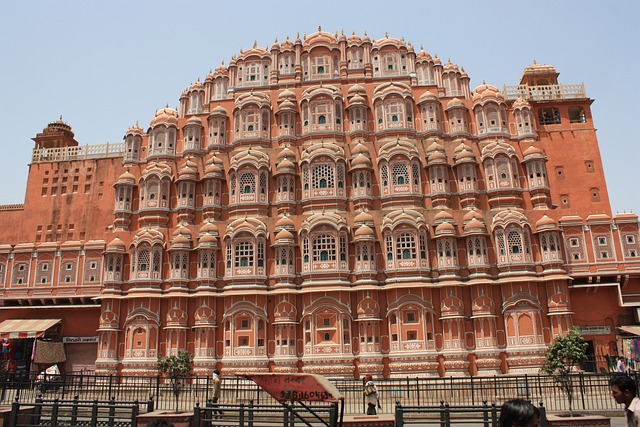
Lal Chand Ustad, a renowned Architect of the Mughal era, designed the structure. The palace was initially build for the royal ladies to observe the street festivals and processions without being seen by the public.
The palace is a fine example of Rajput architecture made of red and pink Sandstone. Today, it is a popular tourist attraction in Jaipur and a symbol of the city’s rich cultural heritage.
Rani ka vav: A Stunning Example of Best Indian Architectures in Gujarat
Rani ki Vav, also known as the Queen’s Stepwell, is a UNESCO World Heritage Site in Gujarat, India. It was build in the 11th century AD by the Solanki Dynasty’s queen, Udayamati, in memory of her husband, King Bhimdev I.

Located in the state of Gujarat, Rani ki Vav is a stunning stepwell. This Architectural marvel consists of seven levels and reaches a depth of over 100 feet. It features intricate carvings depicting various gods, Goddesses, and Mythological scenes, showcasing the artistry of the artisans of that era.
The Stepwell served as a water source and a place for social gatherings and religious ceremonies. Moreover, Rani ki Vav is a testament to ancient India’s architectural and engineering skills. However, in other words, it is not just a utilitarian structure but a beautiful piece of art. For instance, the intricate carvings are Awe-inspiring.
Above all, Rani ki Vav is a must-visit for anyone interested in Indian architecture and history. After that, Similarly, it is a reminder of India’s rich cultural heritage. Therefore, Rani ka Vav should be on everyone’s bucket list.
Unraveling the Magnificence of Hampi: A Masterpiece of Best Indian Architectures
Hampi, located in Karnataka, India, is a UNESCO World Heritage site that served as the capital of the Vijayanagara Empire in the 14th century. The site boasts a Plethora of ancient temples, shrines, palaces, and other structures that showcase the Dravidian style of architecture.
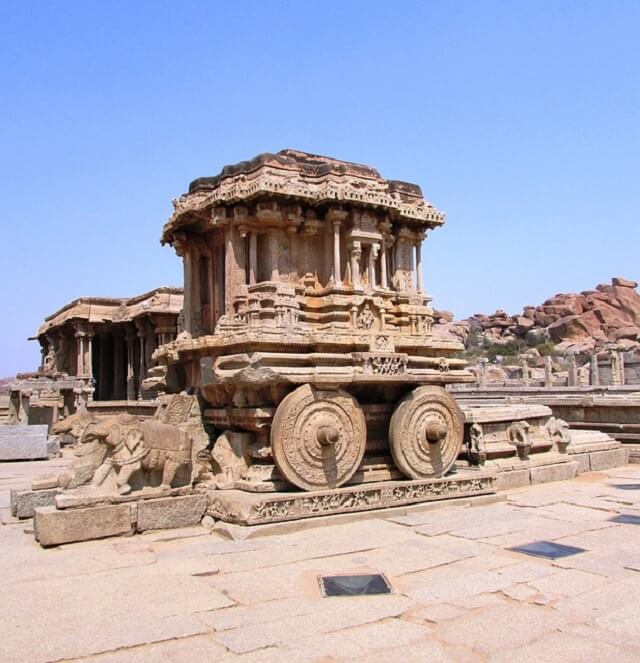
Hampi is a sprawling complex of ancient temples and ruins that tell the story of India’s rich architectural heritage. Moreover, at the center of this complex is the Virupaksha Temple, which is dedicated to Lord Shiva and is a marvel of intricate carvings and grand architecture.
Additionally, the temple is surrounded by smaller shrines and courtyards, creating a breathtaking and immersive experience for visitors. Furthermore, the temple’s location on the banks of the Tungabhadra River adds to its beauty and significance.
The Vittala Temple, the Lotus Mahal, the Hazara Rama Temple, and the Elephant Stables are some of the other remarkable structures that can be found in Hampi. Visitors can explore the ruins and discover the secrets of this ancient Civilization.
Chola Temples: Masterpieces of Best Indian Architectures and Engineering
Chola temples are a unique style of architecture that Originated in the Tamil Nadu region of India during the Chola dynasty. The temples are known for their intricate carvings, Exquisite Sculptures, and towering vimanas.
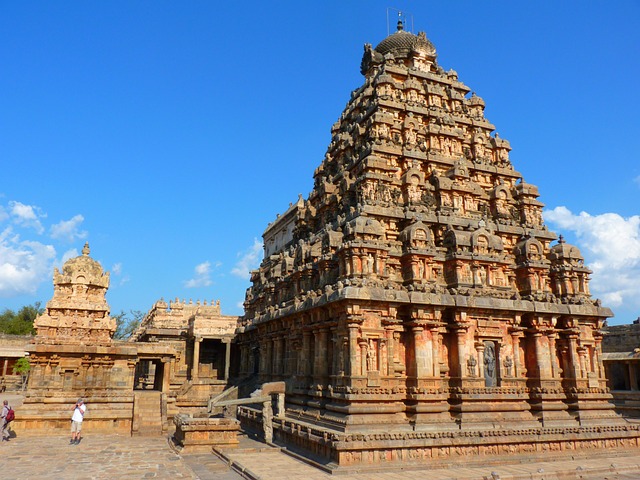
The Chola temples are a striking example of South Indian temple architecture. The temples showcases intricate and detailed carvings of deities, Mythical creatures, and other decorative elements. The temples are adorned with Mandapas, Gopurams, and Shikharams, which further add to their Grandeur. These temples are a testament to the Artistic and Architectural brilliance of the time.
Additionally, the Chola temples, Brihadeeswara Temple in Thanjavur, Airavatesvara Temple in Darasuram, and Gangaikonda Cholapuram Temples continue to inspire awe and admiration among visitors.
Conclusion:
In conclusion, Indian architecture is a reflection of the rich cultural and historical heritage of the country. The top 11 architectures mentioned above showcase the Diversity and beauty of Indian art and architecture. From the ancient Sanchi Stupa to the Grandeur of the Mughal-era Humayun’s Tomb, each structure has a unique story to tell.
Furthermore, the Chola temples and Hampi ruins showcase the Country’s rich history and cultural heritage. Additionally, the intricate details of the Hawa Mahal and Rani Ka Vaav are a testament to India’s artistic prowess.
The art and architecture of India have Influenced not just the country but also the world. These structures are Monuments and living examples of the Country’s past and present. Indian architecture is a Testament to its people’s creativity, skill, and imagination. It will continue to inspire generations to come.
For more articles visit: Journey Index
Visit here: 21Hashtags for more infotainment..
